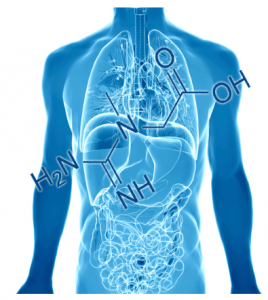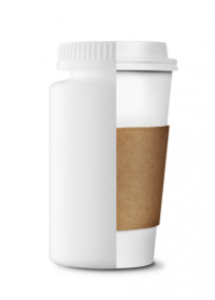Resistant Starch: Super-Carb for Body Composition!
With an overwhelming amount of research demonstrating its benefits, ‘resistant starch’ blows away many of the sexier sounding supplements that ...

With an overwhelming amount of research demonstrating its benefits, ‘resistant starch’ blows away many of the sexier sounding supplements that ...
If you eat a well balanced "healthy" diet, are supplements REALLY necessary to optimize progress? Learn some surprising reasons why ...
Did you know that your body is approximately 90% bacteria and only 10% human? From birth to death, our gut ...
You have also likely heard of ‘HMB’ which is a derivative of leucine. In fact the above pathway requires that ...
For many of us, carbohydrates seem to be the most important and most debated macronutrient when speaking on building muscle. ...
Most hard working bodybuilders, from rank beginner to seasoned pro, will experience some degree of training-related muscle soreness. Whether experienced ...
Let’s face it – seeking out the right information can be confusing whether you are a bodybuilder or just an ...
MI40 Strength Coach Adam Miller coming at you with an intro into the world of powerlifting... and how you can ...
Muscles store carbohydrates exclusively as glycogen, which is basically a long chain of glucose molecules linked together. The level of ...
Could the numerous benefits of this often overlooked amino contain the key to unlocking your gains? From growth hormone stimulation ...
Of the major neurotransmitters, acetylcholine just might be the most important from a muscle building standpoint. As a major neurotransmitter ...
Bodybuilders, and indeed all athletes looking to secure the performance edge would have at least a passing knowledge of the wondrous benefits the super-supplement creatine has to offer. Known for boosting physical energy and muscle growth among bodybuilders and other strength athletes, creatine has also been shown to aid cellular functioning on  many different levels. A brain, bone, and immune system builder which also possesses anti-aging, cognition-enhancing and anti-inflammatory properties, the big C has gone mainstream.
many different levels. A brain, bone, and immune system builder which also possesses anti-aging, cognition-enhancing and anti-inflammatory properties, the big C has gone mainstream.
Creatine, a nitrogenous organic acid, is naturally manufactured in the body (formed endogenously in the kidneys, liver and pancreas from the amino acids glycine, arginine and methionine) to supply energy. As will soon be elaborated upon, its use as a dietary supplement is strongly advised for those seeking to maximize their training progress and overall health and wellbeing. Though it can be obtained nutritionally, most people would find it nearly impossible to get supplemental doses from diet alone. To get the recommended supplemental dose of 5g, we would need to consume around two pounds of beef, three pounds of chicken, 1.5 pounds of herring (the richest dietary source of creatine) or 500 pounds of cranberries (the richest plant source).
An optimal creatine intake is essential for enabling us to generate enough energy to perform at our best at all times. ATP (Adenosine triphosphate), our body’s universal energy molecule, produced in cellular organelles called mitochondria, is constantly losing high-energy phosphate molecules in the course of providing energy to fuel our daily activities. Whenever this happens, ATP becomes ADP (Adenosine diphosphate) and must again be converted back to ATP to begin producing more energy. Enter creatine. Stored in the body as creatine phosphate, creatine donates a phosphate group to ADP to restore it to the energy-giving ATP. Though our body readily converts ADP to ATP with its available creatine resources (however large or small), additional creatine supplied supplementally promotes the faster and more efficient recycling of ATP to significantly boost our ability to perform tasks that require energy such as intense exercise. In simple terms, creatine is a stored source of fuel which our body can rapidly use to support the many demands we place on it. For hard training athletes its use is largely considered to be mandatory.
Now we will discuss a few of creatine’s key benefits, including several that may surprise you, before turning to potential creatine downsides, the best forms of it, whether creatine loading is necessary, and a host of additional topics regarding proper use.
Boosts brain power
To have emerged from the latest studies on creatine is evidence that this anabolic super substance can also improve our mental faculties in a great many ways. Besides the psychological benefits muscle building with the help of creatine brings us, there are more direct feel-good effects. A double blind, placebo controlled study demonstrated that creatine greatly enhanced the effects of SSRI (Selective Serotonin Reuptake Inhibitor) medication to help offset depression, thus heralding creatine as a ‘potential’ means to improve psychological well being. It has also been shown that the toxin-induced deat h of neurons which is implicated in some neurodegenerative diseases can be countered with creatine supplementation. Neurons which can access more energy in the form of ATP have a greater chance of survival compared to those that are depleted of cellular energy. The highly active brain neurons are so sensitive to diminished ATP levels that even a small drop-off in the supply of ATP can have a profound influence on their ability to function properly. Because sufficient creatine consumption can vastly increase the availability of ATP, such neurons may resist early death due to inadequate ATP availability.
h of neurons which is implicated in some neurodegenerative diseases can be countered with creatine supplementation. Neurons which can access more energy in the form of ATP have a greater chance of survival compared to those that are depleted of cellular energy. The highly active brain neurons are so sensitive to diminished ATP levels that even a small drop-off in the supply of ATP can have a profound influence on their ability to function properly. Because sufficient creatine consumption can vastly increase the availability of ATP, such neurons may resist early death due to inadequate ATP availability.
Finally, creatine may also provide cognitive benefits related to memory formation and retention. Creatine supplementation has been shown to improve the brain functioning of healthy adults. A double-blind, placebo controlled study measured the extent to which six-weeks of creatine supplementation may enhance the cognitive functioning of adult vegetarians. Those who received the creatine (one 5g serving per day) showed improved scores on tests which measured intelligence and working memory.
Increases testosterone levels
Many within the iron fraternity are using synthetically derived testosterone to boost muscle gains for one reason alone: it works! But creatine can also promote natural testosterone increases. Researchers gave 10 resistance-trained subjects creatine over a 10 week period, and concluded that resting testosterone levels in this group were significantly increased in comparison to the other 20 study subjects, who received either a placebo or creatine and Beta Alanine combined.
Enhances systemic methylation
An overlooked benefit of creatine consumption is improved systemic methylation (the regulation of protein synthesis, gene expression, and RNA metabolism through enzymatic catalysis), a component integral to staying anabolic. The process of systemic methylation is impeded when the molecule SAM (S-Adenosyl Methionine), which heavily supports methylation, becomes depleted. When produced endogenously, creatine depletes some of our SAM reserves. However, by taking creatine supplementally, we optimize our supply of SAM by offsetting the degradation that normally occurs due to creatine production. Thus we elevate methylation and, in turn, increase its muscle building benefits.
It should be noted as an aside that SAM has shown great promise in improving symptoms of arthritis, depression and liver disease. 
Reduces inflammation and improves recovery
While intensive exercise has multiple far-reaching benefits concerning how we look, feel, and perform, it is the recovery between workouts that often makes all the difference in how well we respond to the rigors of training. As well as directly contributing to improved training performance and muscle growth at the cellular level, creatine also has been shown to improve muscle recovery between workouts. Touted as one today’s safest, most effective non-prescription compounds to improve cellular energy, creatine also plays a key role in modulating inflammation to enhance recovery between workouts. In measuring the inflammation and muscle soreness markers creatine kinase, lactate dehydrogenase, prostaglandin E2, and tumor necrosis factor alpha in runners after a 30 kilometer race, researchers found that those who supplemented with 20g of creatine and 15g of maltodextrin daily for the five days preceding the event experienced an attenuation of exercise induced changes in these markers while the non-creatine group experienced a fourfold increase in creatine kinase, more than a six-fold increase in prostaglandin E2, a doubling of tumor necrosis factor alpha and a 43% increase in lactate dehydrogenase (compared to baseline recordings and all of which indicated significant muscle cell damage and inflammation). The creatine assisted runners also experienced no noticeable increase in lactate dehydrogenase and a 19% reduction in creatine kinase, 61% for prostaglandin E2, and 34% for tumor necrosis factor alpha compared to the control group. The researchers concluded that creatine supplementation reduced exercise-induced cellular damage and inflammation, yet another reason the take creatine when hitting the gym hard.
Up-regulates IGF-1 and satellite cell recruitment
Whenever creatine is consumed, our production of IGF-1 (a key regulator of muscle growth, due in part, to its ability to influence satellite cell activation) is significantly boosted. Creatine may also provoke satellite cell activation and differentiation in a more direct manner. Satellite cells are progenitor cells (cells that grow into specific tissues) which repair and replace damaged muscle fibers; their activation post-workout engages the muscle building process. Researchers found that among weight training subjects who supplemented with creatine over an eight-week period, there was nearly a 100% increase in their muscle fiber satellite cells compared with the control subjects. This increased satellite cell proliferation was accompanied by measurably larger and stronger muscles.
Promotes rapid size gains
When they are saturated with creatine, our muscles are able to retain significantly more water, which gives them a fuller and rounder appearance. In addition to improving muscle tissue growth through proper hydration, creatine, an osmotically active substance, works to pull water into our muscles, vastly inflating them and promoting subsequent size increases of up to six pounds in as little as four weeks. Creatine draws water from the blood and the interstitial space outside of muscle tissue into muscle cells via osmosis, thus increasing cell volume and causing muscle cell membranes to stretch. Such stretching is thought to produce long-term increases in muscle size and strength through enhanced protein synthesis.
Burns fat
Yes, creatine can also help to enhance our fat to muscle ratio. Creatine indirectly burns fat through its positive influence on lean muscle building. The more muscle we have, the higher our metabolic rate and the more fat we use for energy at rest. Also, having a greater degree of muscle mass enables us to work harder in the gym; the harder we work, the more fat we may burn. Lastly, creatine more directly boosts our metabolic rate by optimizing cellular hydration, which helps to keep excessive fat stores at bay.
Potential drawbacks of creatine use
Other than the bloating experienced by some users and the mild water retention that accompanies its use for many, creatine, when used in a safe manner, poses few problems. Nevertheless, with a more sophisticated array of creatine products hitting the market on a regular basis, the bloating and stomach upset that has plagued some users has become a thing of the past. Though creatine has been vilified as a cause of kidney damage, such an accusation is completely unfounded (However, because the kidneys must work hard to excrete creatinine, a breakdown product of creatine, people with pre-existing kidney conditions must consult with their physician before using creatine). Heart problems, muscle cramps and pulls, dehydration, and diarrhea have also been anecdotally reported among some creatine users. However, according to Chad Kerksick, Ph.D., assistant professor of exercise physiology at the University of Oklahoma and an authority on sports supplementation, “Creatine is one of the most-researched sports supplements out there, and there’s no published literature to suggest it’s unsafe.” Jose Antonio Ph.D., a professor at Nova Southeastern University, CEO of the International Society of Sports Nutrition, and a staunch advocate of creatine supplementation adds,
“It was discovered that creatine users had significantly less cramping; heat illness or dehydration; muscle tightness; muscle strains; and total injuries than non-users. Thus, even for athletes who are well-trained, it is clear that regular creatine consumption does not cause harm, and in fact may have a protective effect against certain exercise-related issues.”
To load or not to load
On average, 120g of creatine is stored in a 70kg male, 95% of which can be found in skeletal muscle. To optimize the bodily storage of creatine, many choose to implement a loading phase. A contentious practice, with some choosing to forgo it in favor of beginning with the standard 5g daily dose and continuing in this fashion. Creatine loading is nevertheless an effective way to rapidly boost muscle creatine stores to more rapidly maximize weight gain and performance benefits. While many different loading protocols have been suggested, from 1-2 days to 1-2 weeks in duration, with dosages ranging from four 5g servings per day to as many as six daily 5g servings, an effective strategy worth trying is a phase lasting 2-3 days in which 0.071 g/kg of bodyweight (~6g for a 200lb person) is taken four times per day (mixed with water or juice and preferably consumed with a high carbohydrate meal in order to elicit a significant insulin response). Following this loading phase, daily creatine administration can be reduced to one daily serving of 0.029 g/kg of bodyweight (~2.5g for our 200lb person), though many choose to consume 5g per day (a more realistic target for hard training athletes who wish to sustain optimal creatine storage).
Just as there is no single agreed upon strategy for creatine loading, there is, as of this writing, no consensus on which creatine cycling approach is best or even whether cycling should be done at all; with some opting to cut their creatine intake by half for 1-2 months, following three months of sustained regular intake, and others completely eliminating it for the same period. Though no studies have offered conclusive proof as to the merits of creatine cycling, it is thought that by doing so (usually three months on/one month off) we increase the efficiency of the transporter mechanism that shuttles creatine into muscle cells. Thus, whether to cycle on and off creatine is the subject of much debate.
While many users have experienced excellent results mixing creatine with plain old water (where using 4 ounces of water for every 3g of creatine is recommended) and consuming it with a high carb meal, many experts recommend adding it to fruit juice (in particular, grape juice) to maximize its absorbability. By mixing creatine powder with 70g of simple sugars (juice or other such products), insulin levels are increased and creatine is ‘potentially’ more efficiently taken into the muscles. For those who follow protocols like carb backloading, it should be noted that an insulin agonist, such as whey protein or BCAA’s, or an insulin mimicker, such as ALA or cinnamon, may be an excellent substitute for carbohydrates.
There is also a strong suggestion that combining creatine with D-pinitol (a sugar-like molecule found in a variety of plant foods and available in supplement form) can more rapidly boost the uptake of creatine. It should be pointed out however that at least one study has shown greater increases in lean mass over a 4 week period when creatine is ingested without pinitol.
 Creatine types: which are best?
Creatine types: which are best?
As the most widely researched creatine product available today, creatine monohydrate (creatine bound to water) remains the gold standard to which all other forms of creatine are compared. From citrate, ethyl ester, nitrate, malate, pyruvate, buffered, and liquid to the recently heralded hydrochloride, creatine is a supplement that has been subject to many enhancements and modifications. With almost all of the research on creatine’s performance benefits having been conducted with monohydrate, its merits are indisputable.
While many creatine types have come and gone, their efficacy never quite living up to the hype, the current hot product hydrochloride (creatine attached to hydrochloric acid) is receiving much
positive press. Thought to be absorbed more effectively and to produce less water retention and bloating than monohydrate, hydrochloride is one to watch as research on it continues to emerge.
Meanwhile, effervescent creatine supplementation has been shown to provide no special absorption benefits beyond that of the standard monohydrate (which, contrary to the opinion of some, has superior bioavailability), creatine serum has no apparent effect on muscle ATP or creatine storage regardless of whether it is taken at the recommended dosage or five times this amount for five days, creatine ethyl ester (CEE) and all forms of liquid creatine are considered to be unstable and to break down in the blood before they reach the muscles and should be avoided.
Overall, the most effective creatine will come in 100% pure powder form with no additives such as electrolytes (which do little to enhance creatine’s effectiveness but may limit the amount of active ingredient we receive). You should experiment with different products based on the above protocols until you find one that works best for you. Micronized versions, essentially regular monohydrate ground into smaller particles, may be used by those who are sensitive to the bloating and gastrointestinal distress regular monohydrate causes in some users.
Creatine dos and don’ts
The best time to take creatine appears to be directly after training with a high carb meal when anabolic hormone levels are at their highest and glycogen resynthesis is accelerated. Creatine’s uptake is enhanced at this time due to the higher circulating insulin levels which result when simple carbohydrates are taken post training.
It is important when using creatine to ensure our internal anabolic environment is on point. A strict creatine regimen will not compensate for the lack of proper eating and hard training and, in fact, by falling short in these areas, the beneficial effects of creatine on training and on body-composition will be negated.
Creatine and coffee
While caffeine consumption has been implicated in reducing the efficacy of creatine, studies have shown that caffeine consumed around the time of creatine administration does not affect the muscle uptake of creatine. It is thought that the acidity of coffee may break creatine down into creatinine before it can reach the muscles. However, the pH level of coffee is 4.5 whereas stomach acid is 1, making the acidic environment in the stomach much higher than that of coffee (or juice: around 3) and we know that creatine is not degraded during normal digestion.
Does creatine work for everyone?
While creatine is recommended for all people over the age of 15 (little research has been done on younger populations), individual variability concerning the absorption and utilization of creatine will dictate the effects creatine may have. Creatine will, for the most part, produce amazing benefits for its users. However there is thought to be a small group of people who, despite following creatine administration guidelines to the letter, receive no noticeable improvements in strength, size, or performance (the so called non-responders). Still, there is no conclusive proof to suggest that non-responders actually exist; instead, these people may be lacking in some other area (diet, recovery, training, or overall water consumption).
Much more than a muscle builder
Most people (from hard training bodybuilders to the average couch potato) could probably use a little more creatine. Besides its highly sought after muscle building and strength-enhancing properties, research has proven creatine to be an effective way to manage a wide range of pathologies, from cognitive decline to suboptimal hormonal status, and besides that produced naturally and the trace amounts we obtain nutritionally, an extra 5g taken daily in supplement form will help us to look better, feel better, and perform better, both mentally and physically. So, to edge out the competition, ensure your creatine levels are optimal and start reaping creatine’s many rewards today.